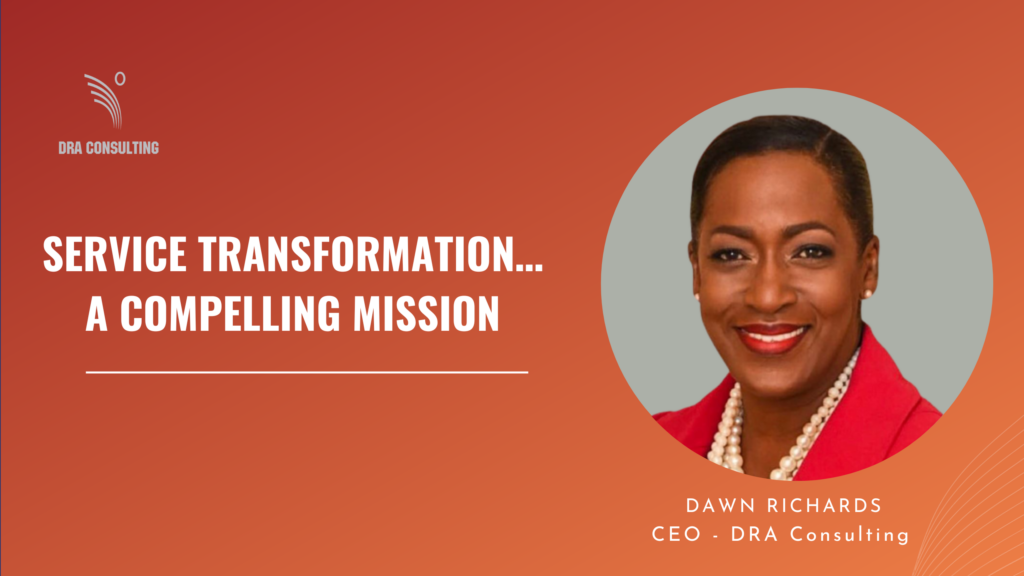The achievement of service excellence and ultimately, service brilliance is one of the highest accomplishments to which a business can lay claim. Typically, the businesses that achieve this feat, are those that are relentless in their commitment to constant service evolution and to remaining relevant to their most discerning customer segments. These are the segments that comprise customers who are unwilling to accept any level of experience that is less than exceptional.
If a business is a start-up, it’s easier to implement a plan that is responsive to this mission of excellence. Conversely, if a business is a going concern, with all the constraints that come with life as a cultural, behavioural and operational iceberg, excellence cannot be achieved by simply tinkering with one or two of the constraints. A more totalitarian approach that addresses all of the internal entanglements, would be a more productive route. In this case, a transformative service project becomes a beneficial choice.
If a business is a start-up, it’s easier to implement a plan that is responsive to this mission of excellence.
In my experience, the businesses that opt for this transformative choice, are those that are high performers in their sector and want to widen the customer experience rating gap with their competitors. They want a permanent solution to hit and miss customer experience and are prepared to overhaul their operating models in favour of an internal ecosystem that has customer and employee centeredness carved into every decision. These are not the businesses that are settling for the stand-alone service training option.
There are several mandates that should be followed to ensure a successful service transformation project.
One of the first requirements, would be the selection of a strong project steering team. This team will need to possess the grit needed to challenge some key elements of the existing status quo. If it turns out that the steering team is timid about not ruffling feathers, fearful of employee resistance to change or petrified at the thought of standing in the board room to mount a strong defence of some of its recommendations, then the selection of candidates would have been flawed.
Conversely, if a business is a going concern, with all the constraints that come with life as a cultural, behavioural and operational iceberg, excellence cannot be achieved by simply tinkering with one or two of the constraints.
I’ve come across several projects that were necessary to take businesses to their next level of growth, crippled by selection teams that ended up being subordinated to the senior executive team’s overriding wishes. Some of those wishes not being in the best interest of the project mission.
Next, exhaustive analysis of the more toxic customer journeys should yield insights into the root causes of where the internal operating systems are failing. Of course, this assumes that a business is tracking its customer experience journeys. Some businesses seem to find this activity too laborious and opt to pass on what I consider to be a critical surveillance system.
Robust horizontal collaboration across a business ensures inbuilt continuity of systems that sustain resolution of the customer’s needs, as he or she criss-crosses various internal departments, online channels and human interactions. Cross departmental discontinuity is one of the areas where customers’ pain points are aggregated heavily.
A more totalitarian approach that addresses all of the internal entanglements, would be a more productive route.
Setting of daily customer success targets is one of the cornerstones of achieving customer happiness. Customer success metrics measure a variety of customer sentiments that provide a panoramic picture of the state of customer experience in a business. Every employee of the business has to be invested in the overall achievement of customer success.
One of the most compelling ways of ensuring the strategic involvement of employees in generating customer happiness, is for each employee to respond to the question, “How did you contribute to the achievement of today’s customer success targets, in a quantifiable way?” Of course, the responses have to be pegged to established performance standards.
In this case, a transformative service project becomes a beneficial choice.
Another mandate would be for the setting and enforcement of standards of customer care. I have found that enforcement of customer experience standards increases the probability of good outcomes. When standards are met consistently and employees rewarded for compliance, this becomes a self-sustaining practice that feeds customer success.
One of the most critical success factors for successful service transformation, is creating employee excitement for the undertaking. A motivated workforce lends itself to being moulded into a powerful force for good and for being eager to serve customers. The big payoff for setting aside time within the transformation project to focus on employees’ needs and then provisioning for the meeting of these needs, is employee enthusiasm.
An energized workforce is a boon to a business that wishes to cast itself as a standard bearer for unparalleled service excellence.
It’s also one of the more compelling pathways for preventing generalized rigor mortis in the workplace.

